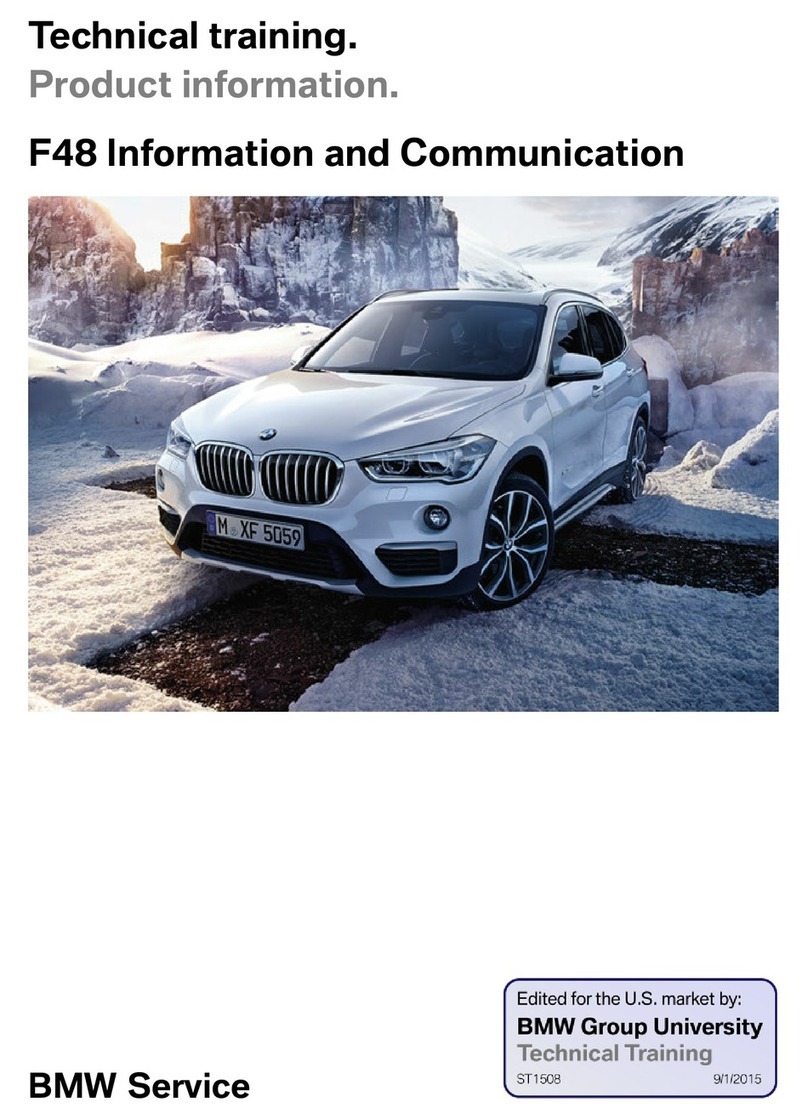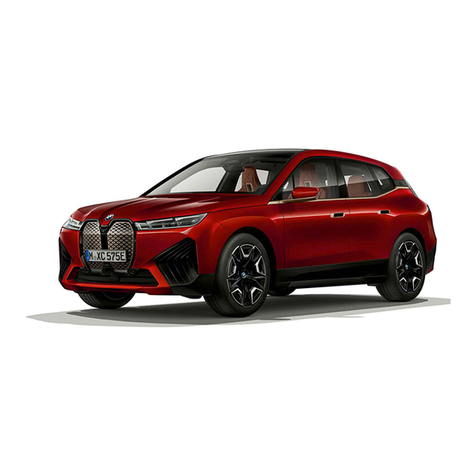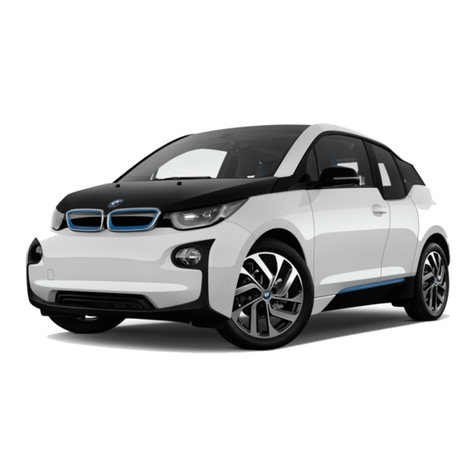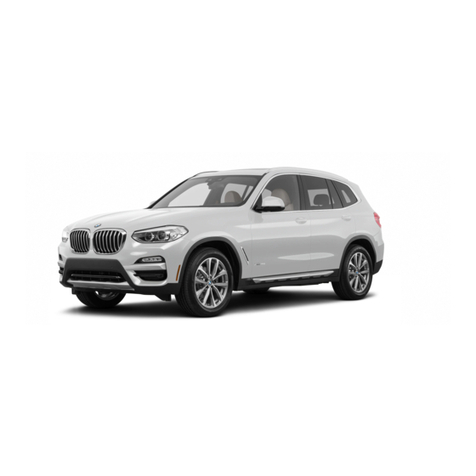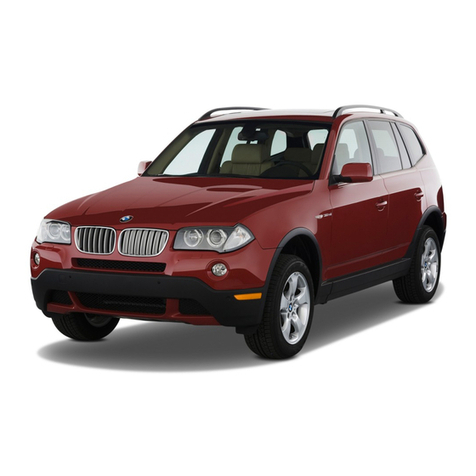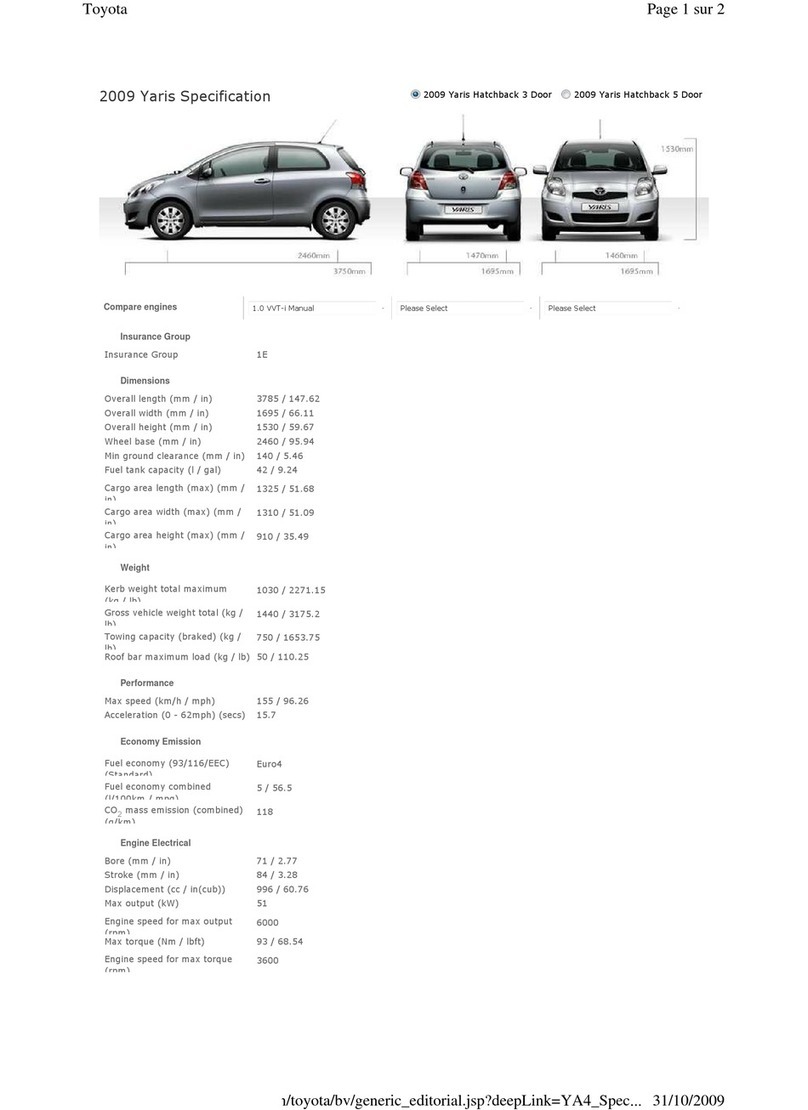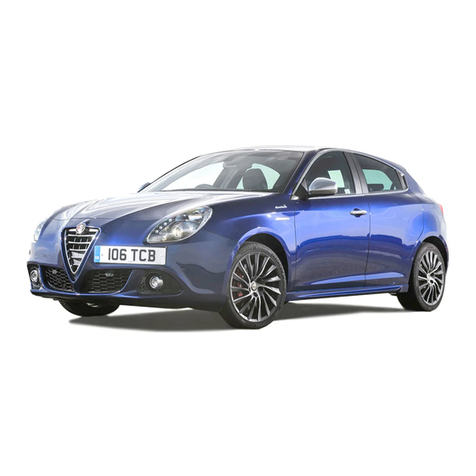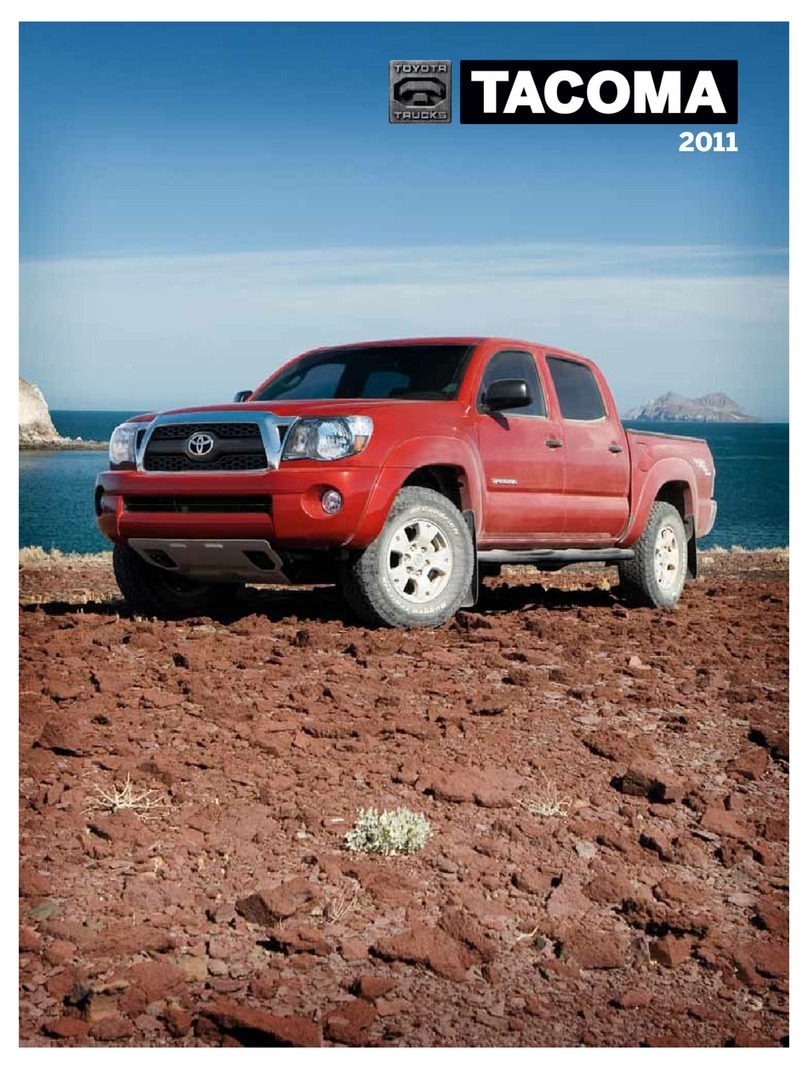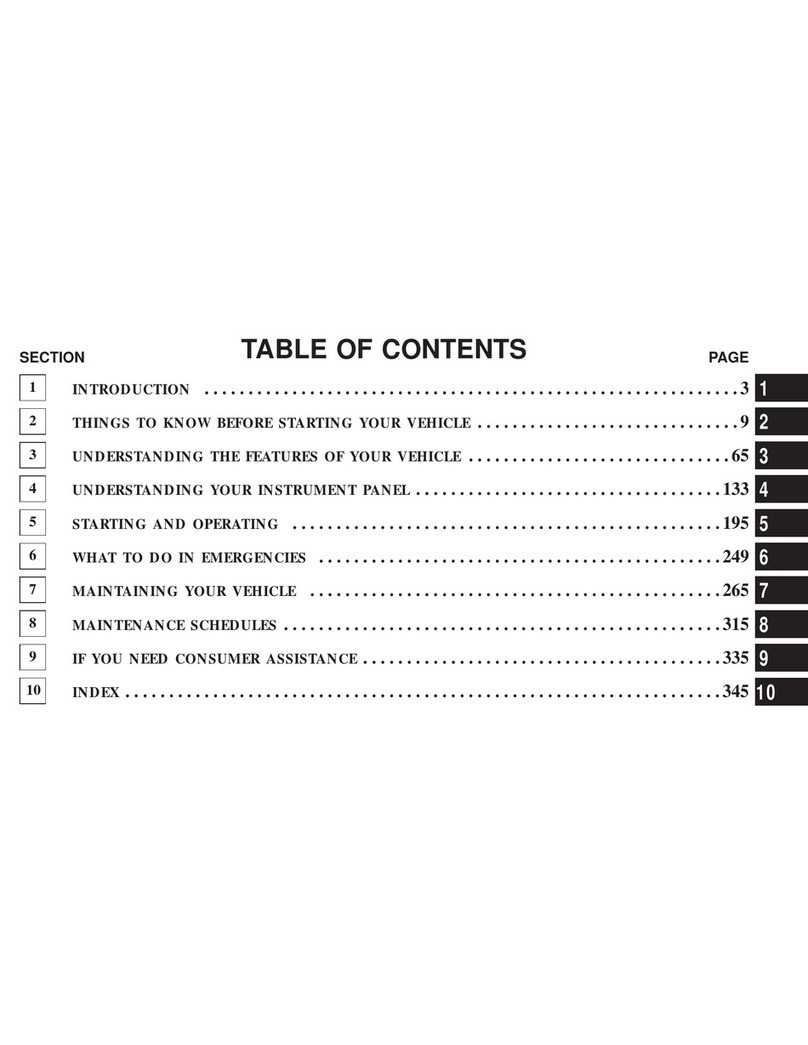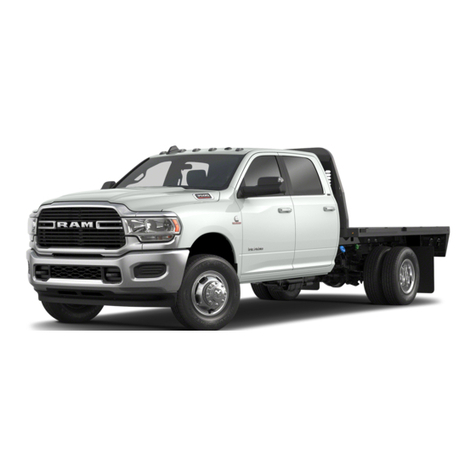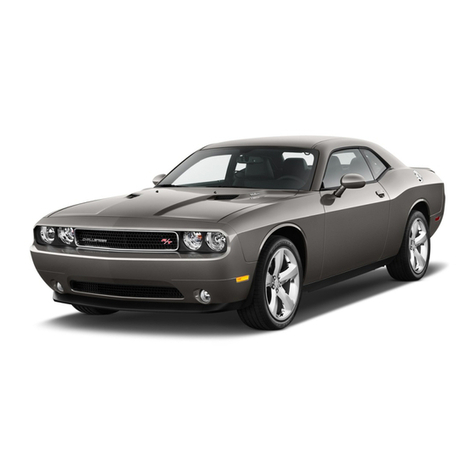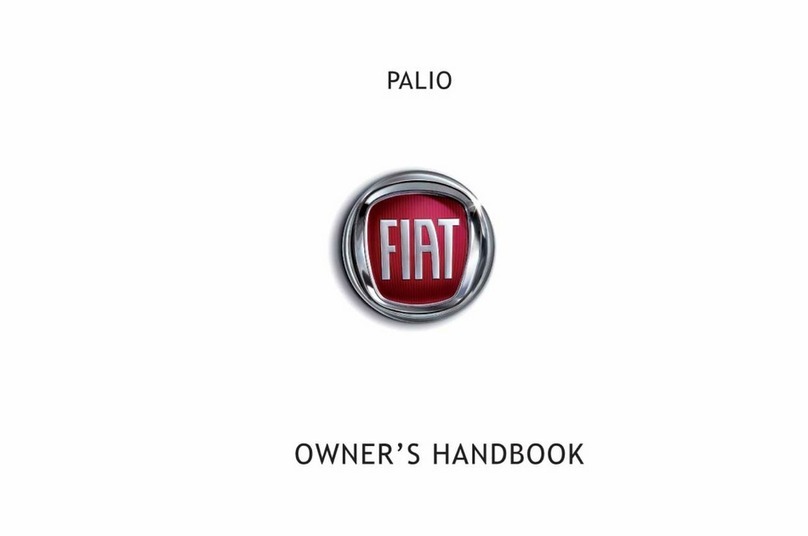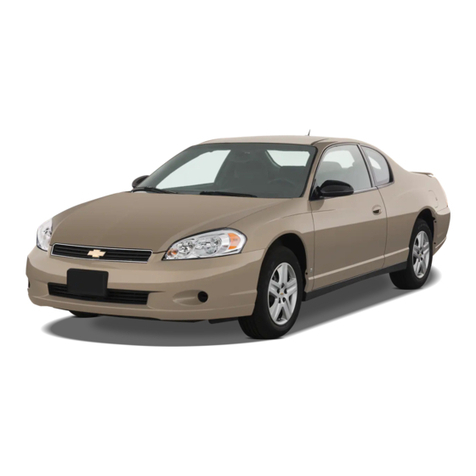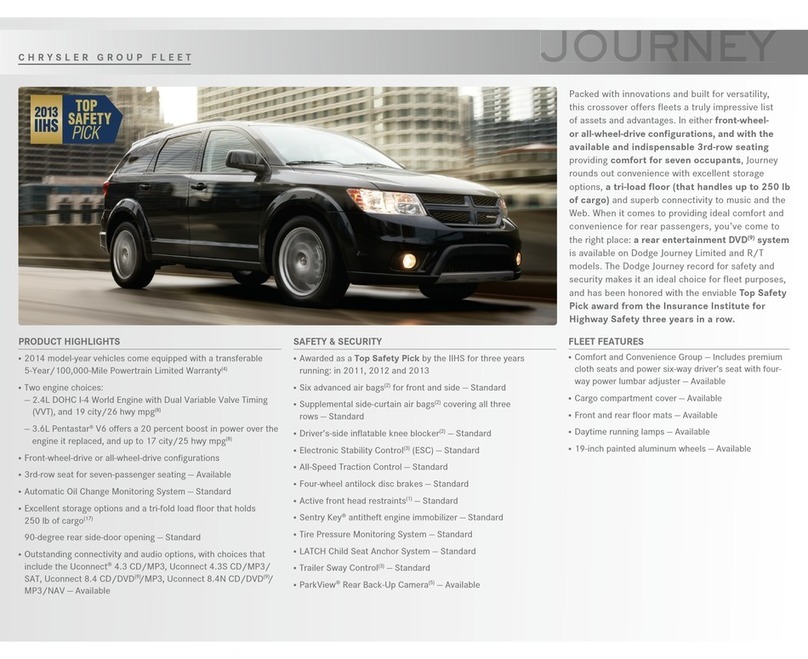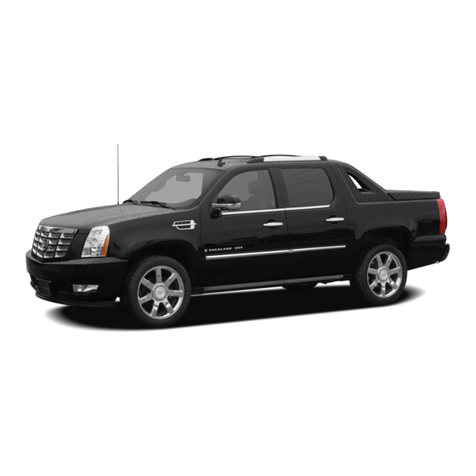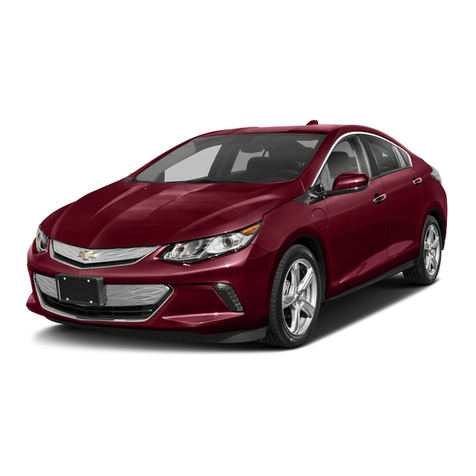BMW G12 2015 Installation guide

Technical�training.
Product�information.
BMW�Service
G12�Voltage�Supply�and�Bus�Systems

General�information
Symbols�used
The�following�symbol�is�used�in�this�document�to�facilitate�better�comprehension�or�to�draw�attention
to�very�important�information:
Contains�important�safety�information�and�information�that�needs�to�be�observed�strictly�in�order�to
guarantee�the�smooth�operation�of�the�system.
Information�status�and�national-market�versions
BMW�Group�vehicles�meet�the�requirements�of�the�highest�safety�and�quality�standards.�Changes
in�requirements�for�environmental�protection,�customer�benefits�and�design�render�necessary
continuous�development�of�systems�and�components.�Consequently,�there�may�be�discrepancies
between�the�contents�of�this�document�and�the�vehicles�available�in�the�training�course.
This�document�basically�relates�to�the�European�version�of�left�hand�drive�vehicles.�Some�operating
elements�or�components�are�arranged�differently�in�right-hand�drive�vehicles�than�shown�in�the
graphics�in�this�document.�Further�differences�may�arise�as�the�result�of�the�equipment�specification�in
specific�markets�or�countries.
Additional�sources�of�information
Further�information�on�the�individual�topics�can�be�found�in�the�following:
• Owner's�Handbook
• Integrated�Service�Technical�Application.
Contact:�conceptinfo@bmw.de
©2015�BMW�AG,�Munich
Reprints�of�this�publication�or�its�parts�require�the�written�approval�of�BMW�AG,�Munich
The�information�contained�in�this�document�forms�an�integral�part�of�the�technical�training�of�the
BMW�Group�and�is�intended�for�the�trainer�and�participants�in�the�seminar.�Refer�to�the�latest�relevant
information�systems�of�the�BMW�Group�for�any�changes/additions�to�the�technical�data.
Information�status:�June�2015
BV-72/Technical�Training

G12�Voltage�Supply�and�Bus�Systems
Contents
1. Bus�Systems..........................................................................................................................................................................................................................................1
1.1. Bus�overview................................................................................................................................................................................................................. 1
1.2. Main�bus�systems.................................................................................................................................................................................................3
1.2.1. K-CAN.................................................................................................................................................................................................... 3
1.2.2. PT-CAN................................................................................................................................................................................................ 4
1.2.3. FlexRay..................................................................................................................................................................................................5
1.2.4. Ethernet............................................................................................................................................................................................... 6
1.2.5. D-CAN................................................................................................................................................................................................10
1.3. Sub-bus�systems...............................................................................................................................................................................................10
1.3.1. LIN-Bus............................................................................................................................................................................................ 10
1.3.2. Local�CAN....................................................................................................................................................................................21
1.3.3. USB........................................................................................................................................................................................................ 21
1.4. Diagnosis�access�OBD2........................................................................................................................................................................ 21
2. Control�Units.................................................................................................................................................................................................................................... 22
2.1. Installation�locations�of�control�units................................................................................................................................. 22
2.2. Gateway............................................................................................................................................................................................................................ 26
2.2.1. Body�Domain�Controller�(BDC)................................................................................................................. 26
2.3. Control�units�on�the�MOST�bus................................................................................................................................................ 29
2.3.1. Head�unit....................................................................................................................................................................................... 29
2.3.2. Hi-fi�amplifier�with�MOST�bus.....................................................................................................................30
2.3.3. Rear�seat�entertainment�(RSE).................................................................................................................. 31
2.4. Control�units�on�the�K-CAN2.........................................................................................................................................................32
2.4.1. Roof�function�center�(FZD)...............................................................................................................................32
2.4.2. Tailgate�function�module�(HKFM).......................................................................................................... 32
2.4.3. Seat�modules......................................................................................................................................................................... 33
2.4.4. Seat�pneumatics�modules.................................................................................................................................33
2.5. Control�units�on�the�K-CAN3.........................................................................................................................................................34
2.5.1. Front�Light�Electronics............................................................................................................................................34
2.5.2. Rear�view�camera�(RFK)........................................................................................................................................34
2.5.3. Parking�Manoeuvre�Assist�(PMA).......................................................................................................... 35
2.5.4. Blind�spot�detection�(SWW)........................................................................................................................... 35
2.6. Control�units�on�the�K-CAN4.........................................................................................................................................................36
2.6.1. Active�Sound�Design�(ASD)............................................................................................................................36
2.6.2. Controller�(CON)................................................................................................................................................................37
2.6.3. Integrated�automatic�heating�/�air�conditioning�(IHKA)......................................... 37
2.6.4. Light�Effect�Manager�(LEM)........................................................................................................................... 38
2.6.5. Telematic�Communication�Box�(TCB)............................................................................................. 39
2.7. Control�units�on�the�K-CAN5.........................................................................................................................................................40
2.7.1. Remote�control�receiver�(FBD)...................................................................................................................40

G12�Voltage�Supply�and�Bus�Systems
Contents
2.7.2. Near�Field�Communication�NFC..............................................................................................................40
2.7.3. Wireless�charging�tray�(WCA)...................................................................................................................... 41
2.8. Control�units�on�the�Ethernet........................................................................................................................................................41
2.8.1. Active�Cruise�Control�(ACC)...........................................................................................................................41
2.8.2. Top�Rear�Side�View�Camera�(TRSVC)............................................................................................ 42
2.8.3. Camera-based�driver�support�systems�(KAFAS)........................................................... 42
2.9. Control�units�on�the�PT-CAN.........................................................................................................................................................43
2.9.1. Digital�Motor�Electronics�DME,�DME2.......................................................................................... 43
2.9.2. High-beam�assistant�(FLA).............................................................................................................................. 44
2.9.3. Instrument�panel�(KOMBI)................................................................................................................................. 44
2.9.4. Night�vision�electronics�NVE......................................................................................................................... 45
2.10. Control�units�on�the�PT-CAN2.................................................................................................................................................... 45
2.10.1. Electronic�transmission�control�(EGS)............................................................................................45
2.10.2. Gear�selector�switch�(GWS)............................................................................................................................46
2.10.3. Power�Control�Unit�(PCU).................................................................................................................................. 46
2.11. Control�units�on�the�FlexRay.......................................................................................................................................................... 47
2.11.1. Advanced�Crash�Safety�Module�(ACSM)................................................................................... 47
2.11.2. Dynamic�Stability�Control�DSC................................................................................................................. 48
2.11.3. Electric�Active�Roll�Stabilization............................................................................................................... 48
2.11.4. Electronic�Power�Steering�(EPS)............................................................................................................ 49
2.11.5. Rear�axle�slip�angle�control�(HSR).........................................................................................................50
2.11.6. Optional�equipment�system�(SAS).......................................................................................................50
2.11.7. Transfer�box.............................................................................................................................................................................. 51
2.11.8. Vertical�Dynamics�Platform�(VDP)......................................................................................................... 51
2.12. Control�units�on�the�local�CAN................................................................................................................................................... 52
2.12.1. Radar�sensor........................................................................................................................................................................... 52
2.12.2. Blind�spot�detection�(SWW2)�(secondary)...............................................................................53
3. Voltage�Supply............................................................................................................................................................................................................................. 54
3.1. Overview�of�voltage�supply............................................................................................................................................................... 54
3.1.1. System�wiring�diagram............................................................................................................................................54
3.2. Components.............................................................................................................................................................................................................. 56
3.2.1. Overview�of�luggage�compartment.....................................................................................................56
3.2.2. Overview�of�engine�compartment......................................................................................................... 57
3.2.3. Battery............................................................................................................................................................................................... 57
3.2.4. Intelligent�battery�sensor.....................................................................................................................................58
3.2.5. Battery�Safety�Terminal..........................................................................................................................................58
3.2.6. Alternator.......................................................................................................................................................................................59
3.2.7. Integrated�supply�module...................................................................................................................................59
3.2.8. Power�distribution�box,�front�right.........................................................................................................60

G12�Voltage�Supply�and�Bus�Systems
Contents
3.2.9. Power�distribution�box,�front�left............................................................................................................. 60
3.2.10. Power�distribution�box,�rear............................................................................................................................ 61
3.2.11. Body�Domain�Controller....................................................................................................................................... 61
3.2.12. PCU�with�vehicle�electrical�system�assistance�measure................................... 62
3.2.13. 24�V�Electronic�Power�Steering............................................................................................................... 62
4. Terminal�Control........................................................................................................................................................................................................................ 66
4.1. Vehicle�conditions............................................................................................................................................................................................ 66
4.2. Power�supply�terminals........................................................................................................................................................................... 69
4.3. Partial�network�operation...................................................................................................................................................................... 70
4.3.1. Prerequisites�for�partial�network�operation............................................................................. 70
4.3.2. Prerequisites�of�control�units�for�partial�network�operation...........................71


G12�Voltage�Supply�and�Bus�Systems
1.�Bus�Systems
1
1.1.�Bus�overview
Bus�overview

G12�Voltage�Supply�and�Bus�Systems
1.�Bus�Systems
2
Index Explanation
ACC Active�cruise�control
ACSM Advanced�Crash�Safety�Module
AMPT Top�Hi-Fi�amplifier
ASD Active�Sound�Design
BDC Body�Domain�Controller
CON Controller
DME Digital�Motor�Electronics
DME2 Digital�Engine�Electronics�2
DSC Dynamic�Stability�Control
EARSH Electric�Active�Roll�Stabilization�rear
EARSV Electric�Active�Roll�Stabilization�front
EGS Electronic�transmission�control
EPS Electromechanical�Power�Steering
FBD Remote�control�service
FLA High-beam�assistant
FLER Front�Light�Electronics�Right
FLEL Front�Light�Electronics�Left
FZD Roof�function�center
GWS Gear�selector
HEADUNIT Head�unit
HKFM Tailgate�function�module
HSR Rear�axle�slip�angle�control�(Rear�steering�module)
IHKA Integrated�automatic�heating�/�air�conditioning
KAFAS Camera-based�driver�support�systems
KOMBI Instrument�panel
LEM Light�Effect�Manager
NFC Near�Field�Communication
NVE Night�Vision�Electronics
PCU Power�Control�Unit
PMA Parking�Manoeuvre�Assist
RFK Reversing�camera
RSE Rear�Seat�Entertainment
RSL Radar�Sensor�Left�(avoidance�assistant)
RSR Radar�Sensor�Right�(avoidance�assistant)
SAS Optional�equipment�system

G12�Voltage�Supply�and�Bus�Systems
1.�Bus�Systems
3
Index Explanation
SMBF Seat�module,�passenger
SMBFH Seat�module,�passenger,�rear
SMFA Seat�module,�driver
SMFAH Seat�module,�driver,�rear
SPNMHL Seat�pneumatics�module�back�left
SPNMHR Seat�pneumatics�module�back�right
SPNMVL Seat�pneumatics�module�front�left
SPNMVR Seat�pneumatics�module�front�right
SWW Blind�spot�detection�(primary)
SWW2 Blind�spot�detection�(secondary)
TCB Telematic�Communication�Box
TRSVC Top�Rear�Side�View�Camera
VDP Vertical�Dynamics�Platform
VTG Transfer�box
WCA Wireless�charging�tray
ZGM Central�gateway�module
1 Start-up�node�control�units�for�starting�and
synchronizing�the�FlexRay�bus�system
2 Control�units�with�wake-up�authorization
3 Control�units�also�connected�at�terminal�15WUP
1.2.�Main�bus�systems
1.2.1.�K-CAN
The�following�K-CANs�are�used�in�the�G12:
• K-CAN2
• K-CAN3
• K-CAN4
• K-CAN5
The�control�units�on�the�K-CAN5�are�not�displayed�in�the�bus�overview�by�the
BMW�diagnosis�system�ISTA.�Diagnosis�is�performed�via�the�Body�Domain�Controller.
All�K-CAN�data�buses�have�a�data�transfer�rate�of�500kBit/s.

G12�Voltage�Supply�and�Bus�Systems
1.�Bus�Systems
4
1.2.2.�PT-CAN
The�following�PT-CANs�are�used�in�the�G12:
• PT-CAN
• PT-CAN2
The�gateway�for�the�PT-CAN2�is�located�in�the�DME.
Both�PT-CAN�data�buses�have�a�data�transfer�rate�of�500kBit/s.

G12�Voltage�Supply�and�Bus�Systems
1.�Bus�Systems
5
1.2.3.�FlexRay
FlexRay

G12�Voltage�Supply�and�Bus�Systems
1.�Bus�Systems
6
Index Explanation
1 Dynamic�Stability�Control�(DSC)
2 Digital�Motor�Electronics�(DME)�(only�6-cylinder�engines)
3 Digital�Motor�Electronics�2�(DME2)�(only�8-cylinder�engines)
4 Transfer�box
5 Electronic�Power�Steering�(EPS�)
6 Electric�active�roll�stabilization�front�(EARSV)
7 Digital�Motor�Electronics�1�(DME1)�(only�8-cylinder�engines)
8 Body�Domain�Controller�(BDC)
9 Vertical�Dynamics�Platform�(VDP)
10 Electric�Active�Roll�Stabilization�rear�(EARSH)
11 Rear�axle�slip�angle�control�(HSR)
12 Advanced�Crash�Safety�Module�(ACSM)
13 Optional�equipment�system�(SAS)
The�FlexRay�overview�includes�all�engine�versions�and�optional�equipment.�The�DME�(item�2)�is
present�for�6-cylinder�engines.�DME1�(item�7)�and�DME2�(item�3)�are�present�for�8-cylinder�engines.
The�terminating�resistors�for�line�termination�are�located�in�the�DME�units�and�in�the�Body�Domain
Controller.
The�FlexRay�has�a�data�transfer�rate�of�10MBit/s.
1.2.4.�Ethernet
Ethernet�with�5�lines�or�4�lines
Ethernet�was�already�used�with�5�lines�in�the�F01�for�vehicle�programming�and�for�the�map�update�of
the�navigation�system�(4�data�lines�and�1�line�for�interface�activation).�In�the�F01�there�is�an�additional
Ethernet�connection�from�the�head�unit�to�the�Rear�Seat�Entertainment�(RSE)�with�4�data�lines�for
transmission�of�the�navigation�data�for�the�RSE.
Both�Ethernet�variants�are�comparable�with�the�standard�Ethernet�variant�100BASE–TX�in�PC
networks.�The�Ethernet�version�with�5�lines�is�still�used�in�the�G12�from�the�OBD2�interface�to�the
Body�Domain�Controller.
Ethernet�with�2�lines
A�new�Ethernet�with�two�lines�is�used�for�communication�in�the�G12.
This�two-wire,�twisted�and�unshielded�bus�line�was�developed�by�the�OPEN�Alliance�BroadR-Reach.
At�BMW,�this�Ethernet�is�called�OABR�Ethernet�and�has�been�adapted�for�the�automotive�sector.
The�data�rate�for�an�OABR�Ethernet�connection�is�up�to�2�x�100�Mbit/s.

G12�Voltage�Supply�and�Bus�Systems
1.�Bus�Systems
7
Hardware�advantages
One�advantage�is�the�transmission�of�vehicle�camera�data.�Vehicle�cameras�(IP-based)�are�not
connected�to�one�control�unit�,�but�several�control�units�by�Ethernet�which�allows�these�units�to�access
the�camera�data�flow�efficiently.�The�network�is�therefore�very�flexible�and�is�well�prepared�for�the
future.
Another�important�advantage�is�the�fast�programming�of�control�units.�The�programming�times�are
reduced�significantly�via�Ethernet.�Whereas�a�CAN�bus�can�only�transmit�data�with�a�maximum�length
of�8�bytes�per�message,�Ethernet�messages�have�a�length�of�over�1500�bytes.�The�user�data�rate�thus
increases:�Considerably�more�message�packages�can�be�transmitted�in�a�shorter�period.
The�OABR�Ethernet�connection�equates�to�additional�weight�and�cost�savings,�due�to�only�using�2
wires.
Data�transfer
For�data�transfer�in�the�standard�Ethernet�100BASE-TX,�one�line�pair�is�needed�for�transmitting�data
and�one�pair�for�receiving.
In�contrast�to�the�standard�Ethernet�described�above,�with�the�OABR�Ethernet�the�data�is�now
transmitted�with�one�line�pair.�This�means�with�the�2-wire�OABR�Ethernet,�a�simultaneous�transmit-
receive�mode�is�done�via�each�of�the�two�single�pair�cables.�The�two�lines�transmit�a�sum�signal
differentially.�If�a�line�is�interrupted,�a�signal�can�no�longer�flow�back�through�the�second�wire�via
the�differential�transmission.�A�symmetrical�transmission�would�thus�no�longer�be�possible,�the
communication�via�the�data�bus�comes�to�a�standstill.
During�the�transmission,�messages�with�100MBit/s�are�transmitted�simultaneously�in�both�directions
via�the�lines.�In�total,�this�gives�a�maximum�transmission�speed�of�200MBit/s�of�data.�In�the�transceiver,
the�transmitted�message�is�subtracted�from�the�bus�signal.�The�result�is�the�message�of�the�opposite
transceiver.�A�schematic�diagram�of�the�transceiver�of�the�OABR�Ethernet�shows�how�the�data
exchange�takes�place:
Transceiver�in�the�OABR�Ethernet�schematic�diagram
Index Explanation
1 Message�from�transceiver�1
2A,�2B,�2C Message�on�the�OABR�Ethernet
3 Subtracted�message�from�transceiver�2
4 Message�from�transceiver�2
5 Subtracted�message�from�transceiver�1

G12�Voltage�Supply�and�Bus�Systems
1.�Bus�Systems
8
Layer�model
The�message�transmission�follows�the�rules�which�were�defined�for�the�conventional�Ethernet
100BaseTX.�The�bodies�on�the�transmitter�and�receiver�side�must�work�according�to�these�defined
rules�so�that�they�agree�how�the�data�is�to�be�processed.
With�the�Ethernet,�the�Open�Systems�Interconnection�model�is�used�(OSI�model).
It�comprises�7�layers:
• Layer�1:�Physical�layer�with�100�MBit/s
• Layer�2:�Link�(device�driver,�hardware)
• Layer�3:�Network�(package�delivery,�routing)
• Layer�4:�Transport�(package�security,�encryption)
• Layers�5-7�Applications�(user�applications�and�processes)
For�the�2-wire�Ethernet�OABR,�the�following�modules�were�also�added:
• Vehicle�network�management
• Service�discovery�report�(for�the�asynchronous�starting�and�stopping�of�functions)

G12�Voltage�Supply�and�Bus�Systems
1.�Bus�Systems
9
The�OSI�model�for�the�2-wire�OABR�Ethernet�looks�as�follows:
OSI�model
Index Explanation
1 Applications�(user�applications�and�processes)
2 Transport�(package�security,�encryption)
3 Network�(package�delivery,�routing)
4 Link�=�connection�setup,�interface�(device�driver,�hardware)
5 Physical�layer�for�data�transfer�with�2x100�MBit/s
6 Additional�modules�defined�for�the�OABR�Ethernet

G12�Voltage�Supply�and�Bus�Systems
1.�Bus�Systems
10
Application�of�2-wire�OABR�Ethernet�in�the�G12
The�following�control�units�are�connected�to�the�vehicle�electrical�system�via�2-wire�OABR�Ethernet�in
the�G12:
• Active�Cruise�Control�(ACC)
• Camera-based�driver�assistance�systems�(KAFAS)
• Top�Rear�Side�View�Camera�(TRSVC)
The�following�control�units�are�also�connected�to�the�vehicle�electrical�system�via�2-wire�OABR
Ethernet�in�the�G12:
• Headunit�(HEADUNIT)
• Rear�Seat�Entertainment�(RSE)
• Optional�equipment�system�(SAS)
• Telematic�Communication�Box�(TCB)
• Top�Rear�Side�View�Camera�(TRSVC)
1.2.5.�D-CAN
The�D-CAN�has�a�data�transfer�rate�of�500�kBit/s.
1.3.�Sub-bus�systems
1.3.1.�LIN-Bus
For�a�better�overview,�the�LIN�buses�are�divided�up�between�several�wiring�diagrams�for�the�G12.

G12�Voltage�Supply�and�Bus�Systems
1.�Bus�Systems
11
LIN�bus�overview�in�the�door�area
LIN-Bus

G12�Voltage�Supply�and�Bus�Systems
1.�Bus�Systems
12
Index Explanation
1 Body�Domain�Controller�(BDC)
2 Exterior�mirror,�front�passenger�side
3 Memory�seat,�front�passenger's�side
4 Power�window�electronics,�passenger's�side�front
5 Memory�seat,�passenger's�side�rear
6 Switch�for�roller�sunblind
7 Power�window�electronics,�passenger’s�side�rear
8 Non-contact�tailgate�opening
9 Power�window�electronics,�driver’s�side�rear
10 Switch�for�roller�sunblind
11 Memory�switch,�driver’s�side�rear
12 Power�window�electronics,�driver's�side�front
13 Memory�switch,�driver’s�side�front
14 Switch�block,�driver's�door
15 Exterior�mirror,�driver's�side

G12�Voltage�Supply�and�Bus�Systems
1.�Bus�Systems
13
LIN�bus�overview�for�engine�electrical�system�and�voltage�supply
LIN-Bus

G12�Voltage�Supply�and�Bus�Systems
1.�Bus�Systems
14
Index Explanation
1 Air�damper�control
2 Electric�fan
3 Body�Domain�Controller�(BDC)
4 Power�Control�Unit�(PCU)�500W
5 Rear�right�power�distribution�box
6Power�Control�Unit�(PCU)�150�W�1
7 Intelligent�battery�sensor�(IBS)
8 Alternator
9 Digital�Motor�Electronics�(DME)
1The�Power�Control�Unit�(PCU)�150�W�is�installed�in�vehicles�with�24�V�steering.
Other manuals for G12 2015
1
Table of contents
Other BMW Automobile manuals
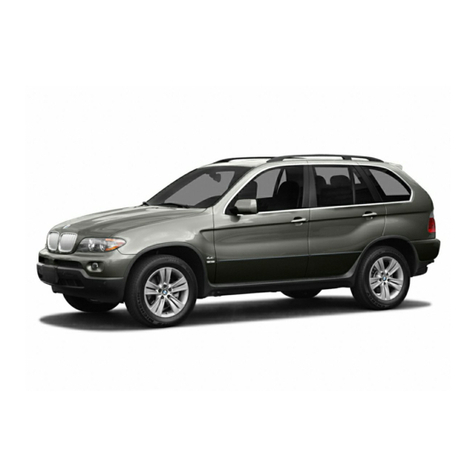
BMW
BMW 2006 X5 User manual
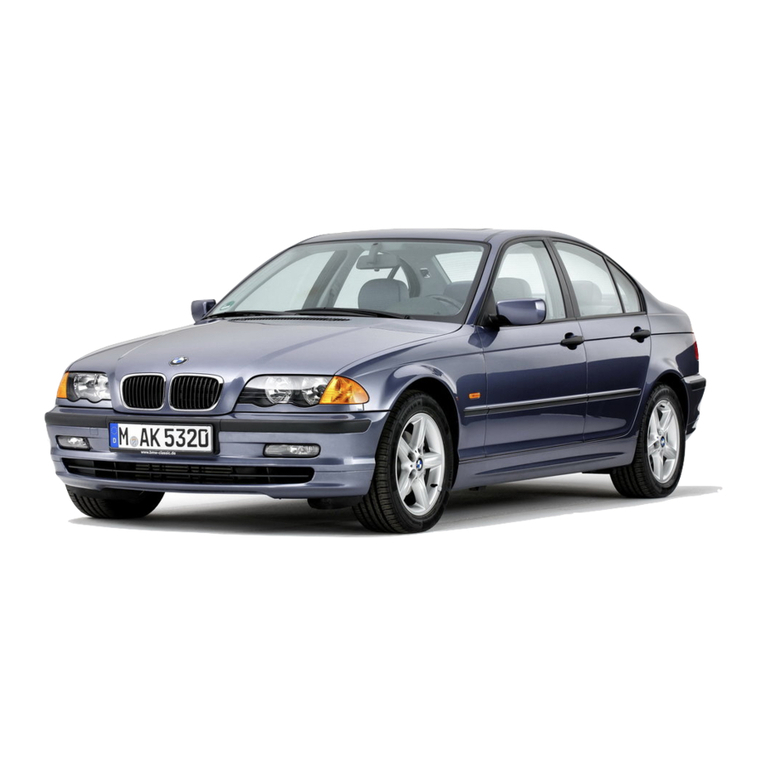
BMW
BMW 1999-2005 M3 User manual

BMW
BMW 528I BROCHURE 2009 User manual

BMW
BMW 650i Coupe User manual
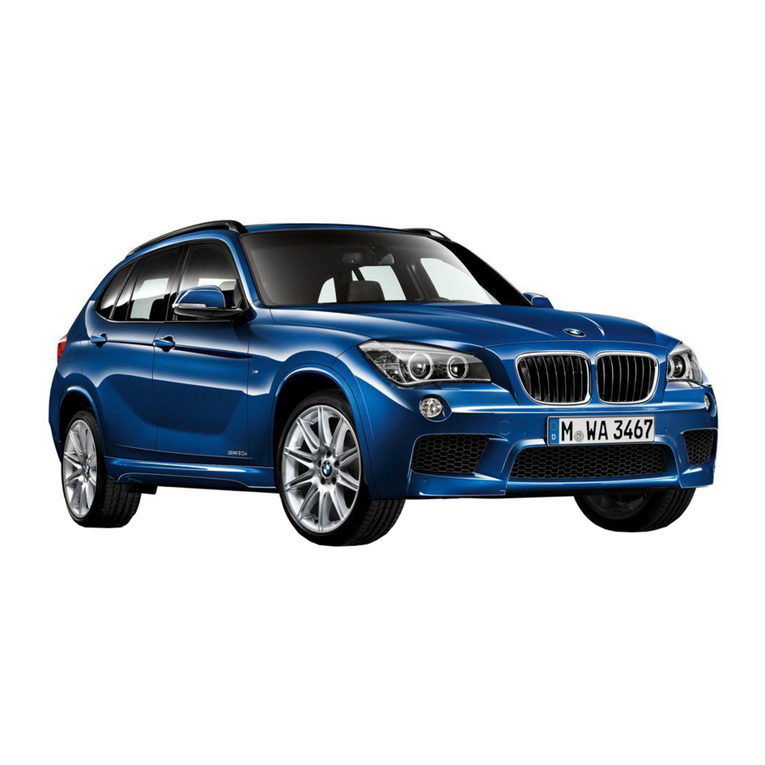
BMW
BMW X1 - PRODUCT CATALOGUE Instruction manual

BMW
BMW 2011 550i xDrive User manual
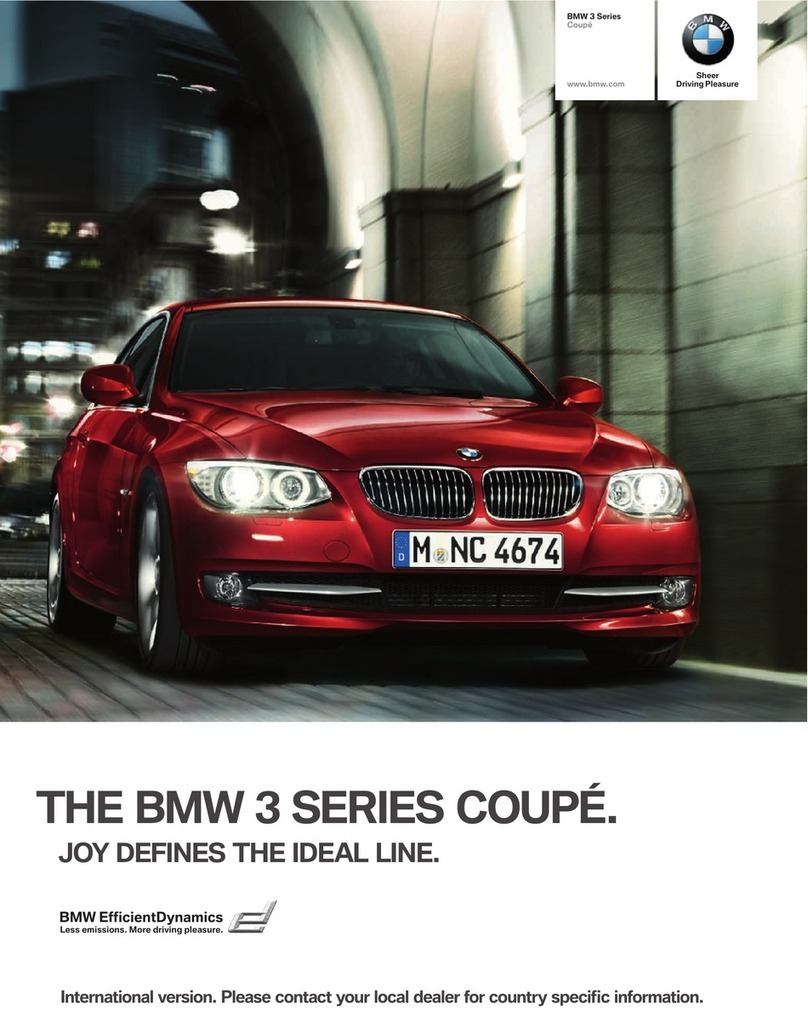
BMW
BMW 318I - BROCHRUE 2010 User manual
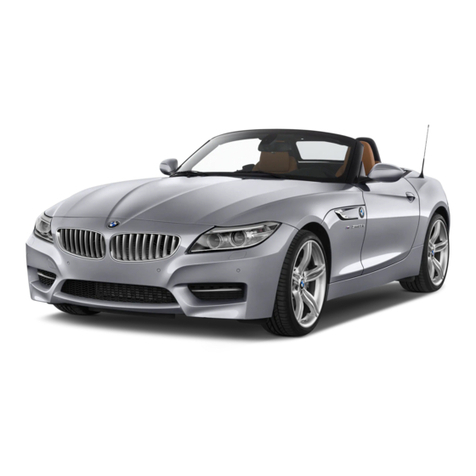
BMW
BMW Z4 2014 User manual
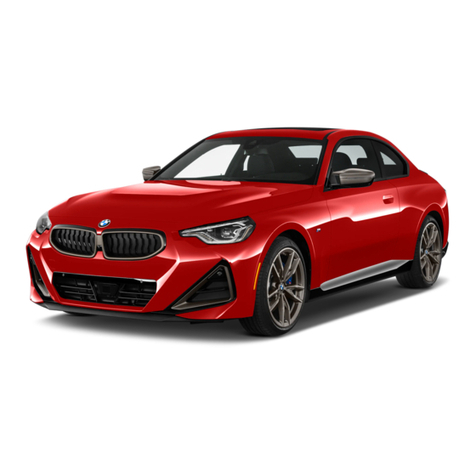
BMW
BMW 2 COUPE 2023 Series User manual
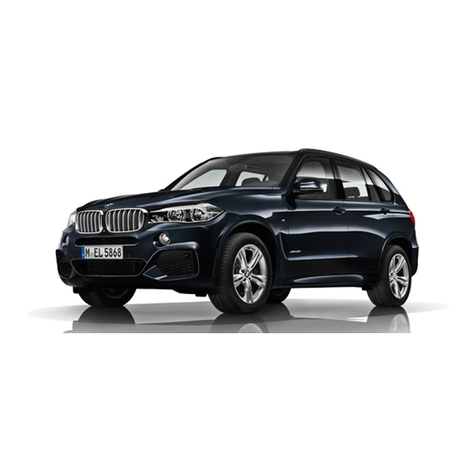
BMW
BMW X5 M User manual
